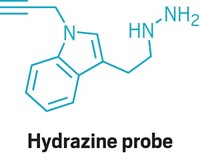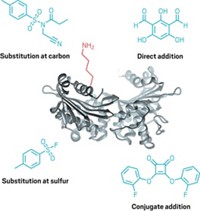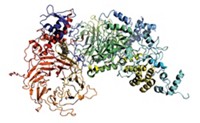Advertisement
Grab your lab coat. Let's get started
Welcome!
Welcome!
Create an account below to get 6 C&EN articles per month, receive newsletters and more - all free.
It seems this is your first time logging in online. Please enter the following information to continue.
As an ACS member you automatically get access to this site. All we need is few more details to create your reading experience.
Not you? Sign in with a different account.
Not you? Sign in with a different account.
ERROR 1
ERROR 1
ERROR 2
ERROR 2
ERROR 2
ERROR 2
ERROR 2
Password and Confirm password must match.
If you have an ACS member number, please enter it here so we can link this account to your membership. (optional)
ERROR 2
ACS values your privacy. By submitting your information, you are gaining access to C&EN and subscribing to our weekly newsletter. We use the information you provide to make your reading experience better, and we will never sell your data to third party members.
Biological Chemistry
RNA G-Quadruplex Tagged Selectively
Chemical Biology: Work could lead to better understanding of mysterious folded RNA structure
by Stu Borman
October 12, 2012
| A version of this story appeared in
Volume 90, Issue 42

Using an established biotagging technique, researchers have identified compounds that distinguish RNA from DNA versions of G-quadruplexes, folded nucleic acid structures. The approach could lead to a richer understanding of RNA G-quadruplexes, the biological role of which is mostly unknown.
The biotagging method, in situ click chemistry, uses known ligands for a class of target compounds to fish for selective ligands for a specific member of that class. The known ligands and a library of candidate ligands are each derivatized with complementary reactive groups. If both types of ligand bind nearby sites on a biomolecule and orient correctly on the target, their complementary groups can react with one another. This combination can be detected via mass spectrometry, thus identifying a selective ligand from the library.
Marco Di Antonio, Raphaël Rodriguez, and Shankar Balasubramanian of the University of Cambridge and coworkers used the approach to find that carboxypyridostatin selectively recognizes TERRA, a key RNA-based G-quadruplex (Angew. Chem. Int. Ed., DOI: 10.1002/anie.201206281). TERRA is produced by transcription of telomeric DNA, which itself tends to form G-quadruplexes and is a potential anticancer drug target. “The function of TERRA in cells is largely unknown, and the significance of its ability to fold into a G-quadruplex is a hot topic,” Balasubramanian says. The new small-molecule probe “may help us get closer to understanding the importance of TERRA in nature.”
The finding “opens up brand new possibilities for G-quadruplex ligands to be used as very selective therapeutic agents able to play a regulatory role either at the transcriptional (DNA G-quadruplex) or translational (RNA G-quadruplex) level in a fully controllable manner,” comments G-quadruplex specialist David Monchaud of the University of Burgundy, in France.
The work introduces “a new chapter in the development of biochemical probes and drugs that target DNA and RNA,” adds in situ click chemistry codeveloper M. G. Finn of Scripps Research Institute.





Join the conversation
Contact the reporter
Submit a Letter to the Editor for publication
Engage with us on Twitter